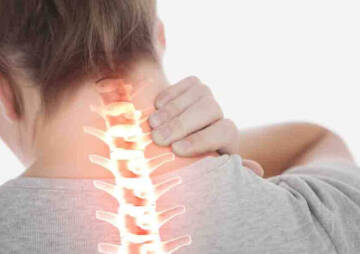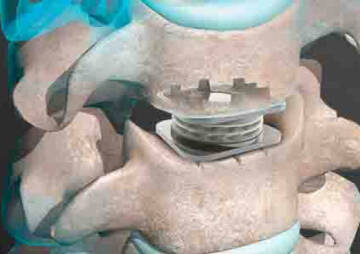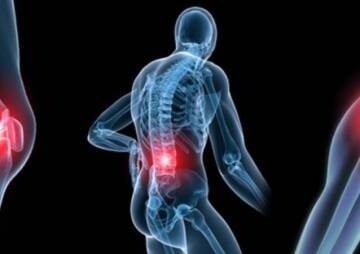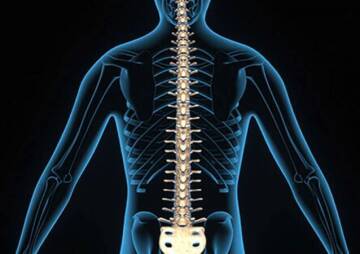-
Category
Craniomaxillofacial Surgery
Orthopedic Surgery
Spine Surgery
Orthopedic Implants
Hip Surgery
Knee Surgery
Pectus Excavatum
Bone Graft
Disinfectants
Healthcare
Spinal hernia facts and symptoms
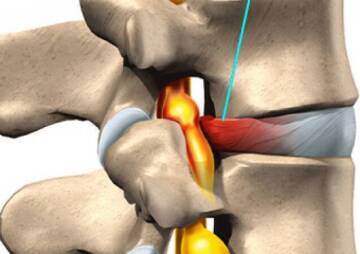
A spinal hernia is an injury to the connective tissues between the vertebrae and usually causes excessive strain and trauma to the spinal cord.
A herniated disk or spinal hernia refers to the problem that happens with one of the rubbery disks that sit between the vertebrae of the individual's bones responsible for stacking and making the spine. As we know, the spinal disk has a soft encased center, which is sometimes called a slipped disk or ruptured disk. A herniated disk occurs when the nucleus pushes out from the tear to the annulus, with physical therapy, exercises, and stretching and conservational methods like heating and icing.
What is a spinal hernia?
A spinal hernia is an injury to the connective tissues between the vertebrae and usually causes excessive strain and trauma to the spinal cord. This results in back pain, pain sensation in the different parts of the body of the individual. The problem of spine hernia is associated with the age and aging of the person. The conclusive diagnosis of the spine hernia is MRI, and the treatment ranges from taking painkillers and goes to surgery. The best protection from spine hernia is maintaining the right posture and core strength and the awareness of its mechanism.

Spinal hernia Symptoms
The signs and the symptoms of the spinal hernia may vary depending on the herniation location and the tissue type. Symptoms include changes such as numbness, tingling, paresthesia, and changes such as muscular. When the herniated disk is in the lumbar region, the individual suffering may experience sciatica because of the irritation of one or more nerve roots of the sciatic nerve. The pain of the spine hernia is not like that of the pulsating pain or the pain that comes and goes. The problem usually continues and sometimes continues in the specific parts and positions of the body. Spinal hernia in the lumbar spine may cause nerve pain that radiates in the lower legs or the groin areas and sometimes can be associated with the bowel and bladder's incontinence. Symptoms usually are experienced on one side of the body. In case the herniation is large and presses the nerves on both sides, both sides of the body will be affected. The patients' main complaint has usually been sharp, cutting pain, and in some cases, there might be a history of localized pain. Point to be mentioned is that the pain quality can be dull, aching, and even challenging to localize.
Other symptoms can be arm and leg pain, numbness, tingling, and weakness, causing the individual to stumble.

Causes
Internal pressure is equalized on parts of the discs when the spine is on the straight model, such as lying or standing. The disc's internal pressure can move when the person is sitting or bending to lift something from 17psi to 300 psi. The spine or disk herniation can result from general wear and tear, such as sitting, driving, squatting, and even a secondary lifestyle. To add on, spine herniation can happen as a result of lifting heavy loads. Athletes, especially those who are playing contact games such as rugby, American football, ice hockey, and wrestling, are more prone to spine herniation. Spine herniation can occur in the back, especially the lower back, and might happen in the vertebrae of the individual's neck. As the person ages, the spinal disk loses some of the water content, and this reduction makes the disks less supple.
Risks
The process of aging and the general wear and tear, the spine may increase the chances of developing a spine hernia. The spine hernia can be caused by repetitive activity and an injury to the spinal cord. People who are having physically demanding jobs have significant risks of back pain and problems. Repetitive lifting, pulling, and bending can increase the herniated disc's risk, and in some people, such problems are associated with their genetics.
Diagnosis
A spinal hernia can be diagnosed with proper diagnostic tests. A person can have a spinal hernia but face no pain at all. Some tests that can help in the diagnostics of the herniated disc are:
X-ray: This test uses small doses of radiation to produce images of the body. X-ray of the back is done to understand and determine the reason for the back or neck pain in the individual.
MRI or CT scan: MRI or Magnetic Resonance Imaging and Computed tomography can show more detailed images and help the physician find the back pain.
Myelogram: This is an injection of dye injected in the spinal canal of the patient before undergoing the CT scan test. A Myelogram helps to pinpoint the actual size of the herniation along with its location.
EMG: Electro myelogram is a process involving the placement of small needles into the different muscles and the measurement of the electrical activity. This test can help determine which nerve root or better said roots are being affected by the spinal herniation.
Treatments for spinal hernia
Herniated disc or spinal hernia mostly resolves on its own with the conservative treatments that include rest, anti-inflammatory medicines, and physiotherapy. For some people, applying ice packs or moist heat on the affected area gave relief from the pain and the muscle spasm in the back. In cases where conservative treatment fails to suit the problem, then injections or surgeries are recommended. Medicine, such as nonsteroidal anti-inflammatory drugs, can relieve the pain and the stiffness and allow mobility to the individual. Spinal surgery may be needed for those who do not respond to the non-surgical treatments, and the symptoms are progressively worse. The most common surgical option includes microdiscectomy, laminectomy, and foraminotomy. Injections in the spine is an injection of cortisone-type medicine into the lower back area that may reduce the swelling of the nerve roots and allow mobility. Such injections are referred to as epidurals as well as nerve blocks.
Complications
The spinal cord ends above the waist, and an extended group of nerves continues through the spinal canal. A Spinal hernia can rarely compress the entire spinal canal. Emergency surgery is seldom required to avoid the permanent weakness or paralysis of the individual. Medical attention should be given if you face problems such as worsening symptoms such as the pain, numbness and weakness, loss of control of the bowel and the bladder. Saddle anesthesia is a kind of progressive loss in the sensation that affects the areas that touch the saddle like the inner thighs, back of the legs, and the area around the individual's rectum.
Preventions
Prevention is not always possible, but there are few steps that an individual can take to reduce the risk of getting a spinal hernia or herniated disk.
- Proper techniques should be used while lifting. The waist should not be bend, and instead, the knees should be bend while the back is straight, and the leg muscle should be used to lift.
- Excess weight adds pressure on the lower back, so it's better to maintain a healthy weight.
- Good posture while walking, sitting, standing, and sleeping should be practiced.
- Sit with your feet flat on the floor and sleep on a firm mattress and does not rest on your stomach.
- High heeled shoes should be avoided.
- Stop smoking.
- Eat a healthy and well-balanced meal daily.
- To keep the muscles of the back and the legs healthy, you should exercise daily. Exercise such as aerobic is a good idea.
- If sitting for a long duration of time, then stretch yourself.
As stated above, we read about the herniated disc and spinal herniation. Preventions were comfortable, and an individual must be conscientious when it comes to spinal cord and disc as any severe issue or injury can cause the person to be paralyzed for the rest of his/her life.
Spinal hernia surgery is done at the end when all the non-surgical treatments fail to ease the pain of the individual, and the patient still complains about back pain. If there is a pain in the back and you are worried about it, consult a doctor and go for tests such as MRI and X-ray to see the actual issue causing pain to your back. The best exercise for a person suffering from a herniated disc can be yoga, which improves flexibility and offer relief of pain in the leg or lower back. A herniated disc can get better within a few days and can completely resolve in 5 to 7 weeks. Keep in mind that during the recovery session, make sure you have the right posture no matter you are sleeping, standing, or sitting.
